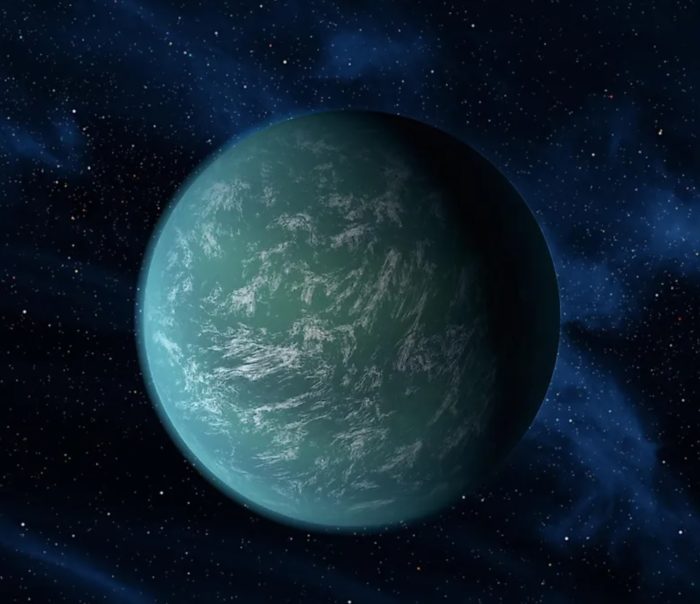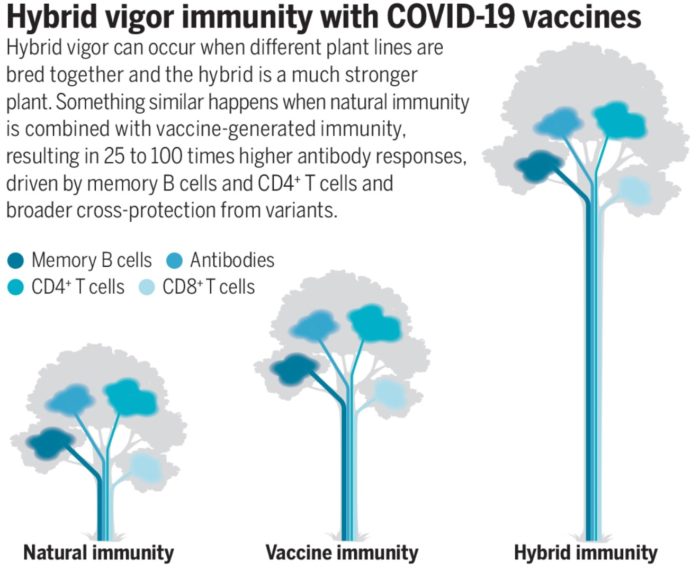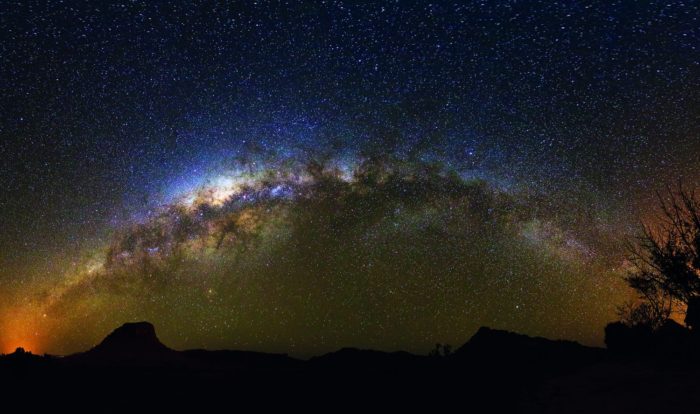 I’m still waiting. Since we developed the technology to detect exoplanets – planets orbiting other stars – I have been tracking those exoplanets that are the most Earth-like. That term, “Earth-like”, is used quite a bit in science news reporting about exoplanets, but very loosely, in my opinion. I’m still waiting for an exoplanet discovery that is fully Earth-like.
I’m still waiting. Since we developed the technology to detect exoplanets – planets orbiting other stars – I have been tracking those exoplanets that are the most Earth-like. That term, “Earth-like”, is used quite a bit in science news reporting about exoplanets, but very loosely, in my opinion. I’m still waiting for an exoplanet discovery that is fully Earth-like.
This happened again just recently with the discovery of a second planet in the TOI 700 system that is “Earth-sized” (that’s more accurate than saying “Earth-like”). Unfortunately, TOI 700 is a red dwarf, which means the two Earth-sized planets technically in their habitable zone are also likely tidally locked. Further, red dwarfs are unstable compared to orange or yellow stars and may strip the atmospheres from any planets close enough to be in the habitable zone.
Before I review the best candidates – what makes an exoplanet “Earth-like”. The two criteria that seemed to be used by most reporting is that they are small rocky planets in their generously defined habitable zone. Often the term is applied to so-called “super-Earths” which are more massive than Earth but less massive than ice giants – basically anywhere between Earth and Neptune. It seems astronomers agree on an upper limit of mass of 10 Earth masses, but disagree on the lower limit (anywhere from >1 to 5). They should just pick a number. I think something like 2 Earth masses is reasonable, but perhaps it’s better to use surface gravity. We can use the formula a=GM/R^2 to determine surface gravity. So, for example (if I did the math right) a planet with 2 times Earth’s mass and 1.2 times the radius would have a surface gravity of 1.38 G. What about the lower limit? I would suggest somewhat larger than Mars – we could make an arbitrary cutoff of 0.5 G surface gravity.
The habitable zone is the distance from the parent star where it is possible to have liquid water on the surface. But there are lots of other variables here as well, mainly relating to the atmosphere. Venus, for example, is technically in our sun’s habitable zone, as is Mars, but neither are habitable. If Mars had more atmosphere and Venus less, however, they could have a survivable environment.
I think exoplanets around red dwarfs at this point need to not count as “Earth-like” even if size and temperature are in the range. They would have to be very close to their parent star, which means they are likely tidally locked (in itself not a deal-killer) and likely don’t have much of an atmosphere. There may be exceptions to this, and there are lots of red dwarfs so we may ultimately find some special planets around red dwarfs with life, but for now it is so unlikely they should simply not be on the list. Orange and yellow suns are the best candidates. Larger and brighter than yellow and the lifespan of the star becomes too short, but still may be a candidate with the right conditions for people to settle. Moons of gas giants are another possibility, but the variables get more complicated.
So to be truly Earth-like we would want a planet with a surface gravity somewhere between 0.5 and 1.3 that of Earth, that is small and rocky, and that orbits an orange to yellow star in the habitable zone. But there are other things that can go wrong with any candidate world. We also need to consider what question, exactly, we are asking. Are we interested in worlds we could one day settle? That would mean they also need to be very close, within 20 light years or so. Are we looking for a world that is already harboring life, and how much time would we want for that life to have had to evolve? This is important if we are looking for technological civilizations.
Here is a list of the ten most Earth-like exoplanets discovered so far. None really meet my criteria. Most orbit red dwarfs. Some are super-Earths.
It’s too early to be discouraged, however. Some of our planet-finding techniques favor larger planets, or ones very close to their host stars. It is therefore harder and takes longer to discover small rocky worlds at Earth like distance from their stars. Astronomers estimate there are 300 million to 40 billion Earth-like planets in the Milky way. That is still a huge variance, but taking an average figure, that’s a lot. That number will be refined as we search more stellar systems for their planets. There are about 100 billion stars in the Milky way, but many of them are in multi-star systems. Astronomers estimate that 1 in 5 systems have at least one “Earth-like” planet, but again, I wonder what definition they are using. Most of these are likely red dwarfs (because most stars are red dwarfs).
Hopefully they will nail down these numbers with higher confidence in the near future. It would also be nice to complete a survey of all the closest stars to our system. Meanwhile I will keep tracking new discoveries.
 Some ideas never seem to die. There is something compelling about the narrative, perhaps because it fills some explanatory need. One of those narratives is that “they” have “the cure” to cancer but are keeping it hidden from the public in order to protect the profits that result from cancer treatment. I recently received the following e-mail (partly redacted):
Some ideas never seem to die. There is something compelling about the narrative, perhaps because it fills some explanatory need. One of those narratives is that “they” have “the cure” to cancer but are keeping it hidden from the public in order to protect the profits that result from cancer treatment. I recently received the following e-mail (partly redacted):
 As many experts predicted, the COVID-19 pandemic is slowly sliding into an endemic infection. A pandemic is essentially when an epidemic goes worldwide. Endemic means that an infection is here to stay. It is no longer considered an “outbreak” but is constantly spreading around a population without having to be introduced. The flu, for example, is endemic, although it is also seasonal. Measles was endemic in the US, but then was eliminated through vaccination and was reduced to isolated outbreaks. However, it is transitioning to being endemic again because of vaccine hesitancy.
As many experts predicted, the COVID-19 pandemic is slowly sliding into an endemic infection. A pandemic is essentially when an epidemic goes worldwide. Endemic means that an infection is here to stay. It is no longer considered an “outbreak” but is constantly spreading around a population without having to be introduced. The flu, for example, is endemic, although it is also seasonal. Measles was endemic in the US, but then was eliminated through vaccination and was reduced to isolated outbreaks. However, it is transitioning to being endemic again because of vaccine hesitancy. There are several viral videos spreading claiming to demonstrate a large electric charge stored in certain kinds of rocks in Africa. The most popular
There are several viral videos spreading claiming to demonstrate a large electric charge stored in certain kinds of rocks in Africa. The most popular  Grand conspiracy theories are a curious thing. What would lead someone to readily believe that the world is secretly run by evil supervillains? Belief in conspiracies correlates with feelings of helplessness, which suggests that some people would rather believe that an evil villain is secretly in control than the more prosaic reality that no one is in control and we live in a complex and chaotic universe.
Grand conspiracy theories are a curious thing. What would lead someone to readily believe that the world is secretly run by evil supervillains? Belief in conspiracies correlates with feelings of helplessness, which suggests that some people would rather believe that an evil villain is secretly in control than the more prosaic reality that no one is in control and we live in a complex and chaotic universe. The world produces about 380 million tons of plastic every year, and half of that is single use plastic. This figure is projected to increase by 70% by 2050. A 2017 study found that of all the plastic produced, “9% of which had been recycled, 12% was incinerated, and 79% was accumulated in landfills or the natural environment.” Current practices are unsustainable, as a lot of this plastic ends up in the oceans and elsewhere in the environment. Researchers are increasing looking to bacteria as one potential solution to this problem.
The world produces about 380 million tons of plastic every year, and half of that is single use plastic. This figure is projected to increase by 70% by 2050. A 2017 study found that of all the plastic produced, “9% of which had been recycled, 12% was incinerated, and 79% was accumulated in landfills or the natural environment.” Current practices are unsustainable, as a lot of this plastic ends up in the oceans and elsewhere in the environment. Researchers are increasing looking to bacteria as one potential solution to this problem. After publishing thousands of blog posts I have found that sometimes the most trivial topics garner the most debate, both in amount and intensity. I wouldn’t call it a rule, just a casual observation, likely rife with confirmation bias. But at the very least I am surprised sometimes by how vehemently people will argue about points that are ultimately subjective and of little importance.
After publishing thousands of blog posts I have found that sometimes the most trivial topics garner the most debate, both in amount and intensity. I wouldn’t call it a rule, just a casual observation, likely rife with confirmation bias. But at the very least I am surprised sometimes by how vehemently people will argue about points that are ultimately subjective and of little importance. When I was a child I loved looking up at the night sky and seeing thousands of stars. I especially loved seeing the disc of the Milky Way spreading across the sky. I can’t remember when this first dawned on me, but as an adult I can no longer do this. When I look up into the sky, even on a clear night, I can still see lots of stars, although not as many, and I can’t make out the Milky Way. It’s simply not visible.
When I was a child I loved looking up at the night sky and seeing thousands of stars. I especially loved seeing the disc of the Milky Way spreading across the sky. I can’t remember when this first dawned on me, but as an adult I can no longer do this. When I look up into the sky, even on a clear night, I can still see lots of stars, although not as many, and I can’t make out the Milky Way. It’s simply not visible.
 I file this one under – an interesting technology that will probably never have any significant application. I could be wrong, but see what you think. Researchers have created a “
I file this one under – an interesting technology that will probably never have any significant application. I could be wrong, but see what you think. Researchers have created a “ I’m still waiting. Since we developed the technology to detect exoplanets – planets orbiting other stars – I have been tracking those exoplanets that are the most Earth-like. That term, “Earth-like”, is used quite a bit in science news reporting about exoplanets, but very loosely, in my opinion. I’m still waiting for an exoplanet discovery that is fully Earth-like.
I’m still waiting. Since we developed the technology to detect exoplanets – planets orbiting other stars – I have been tracking those exoplanets that are the most Earth-like. That term, “Earth-like”, is used quite a bit in science news reporting about exoplanets, but very loosely, in my opinion. I’m still waiting for an exoplanet discovery that is fully Earth-like.




